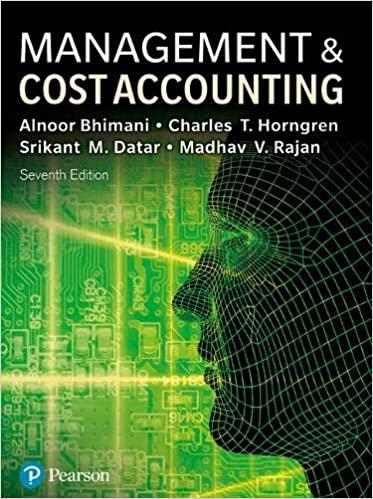Question
Process Co has two divisions, A and B. Division A produces three (3) types of chemicals: products L, M and S, using a common process.
Process Co has two divisions, A and B. Division A produces three (3) types of chemicals: products L, M and S, using a common process. Each of the products can either be sold by Division A to the external market at split-off point (after the common process is complete) or can be transferred to Division B for individual further processing into products LX, MX and SX.
In November 2013, which is a typical month, Division A’s output was as follows:
Product Kg
L 1,200
M 1,400
S 1,800
The market selling prices per kg for the products, both at split-off point and after further processing, are as follows:
Shs. Shs.
L 5,600 LX 6,700
M 6,500 MX 7,900
S 6,100 SX 6,800
The specific costs for each of the individual further processes are:
Shs.
Variable cost of Shs. 500 per kg of LX
Variable cost of Shs. 700 per kg of MX
Variable cost of Shs. 800 per kg of SX
Further processing leads to a normal loss of 5% at the beginning of the process for each of the products being processed.
Required:
(a) Calculate and conclude whether any of the products should be further processed in Division B in order to optimise the profit for the company as a whole.
(b) It has been suggested that Division A should transfer products L and M to Division B for further processing, in order to optimise the profit of the company as a whole. Divisions A and B are both investment centres and all transfers from Division A to Division B would be made using the actual marginal cost. As a result, if Division A were to make the transfers as suggested, their divisional profits would be much lower than if it were to sell both products externally at split-off point. Division B’s profits, however, would be much higher.
Required:
Discuss the issues arising from this suggested approach to transfer pricing.
(c) Process Co is becoming increasingly concerned that environmental costs may be increasing within the company. However, the company has not yet developed a structured way for accounting for these costs. It has heard of a number of different management accounting techniques which can be used to account for environmental costs, including ‘input/output analysis’, ‘flow cost accounting’, ‘environmental activity-based costing’ and ‘life cycle costing’.
Required:
Briefly describe TWO of these techniques in the context of environmental management accounting.
Step by Step Solution
3.39 Rating (149 Votes )
There are 3 Steps involved in it
Step: 1
a To determine whether any of the products should be further processed in Division B we need to compare the profitability of selling the products at splitoff point versus after further processing For ...
Get Instant Access to Expert-Tailored Solutions
See step-by-step solutions with expert insights and AI powered tools for academic success
Step: 2

Step: 3

Ace Your Homework with AI
Get the answers you need in no time with our AI-driven, step-by-step assistance
Get Started


